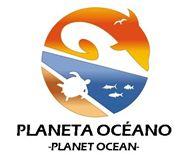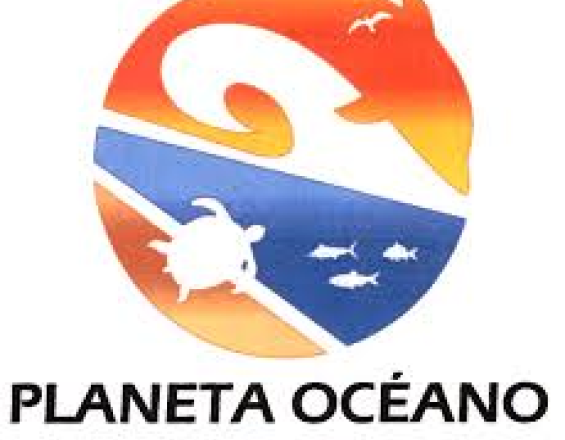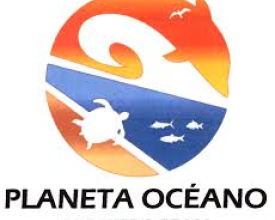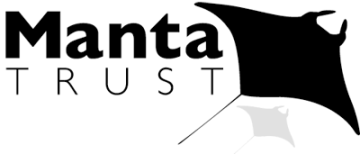
Empowering artisanal fishermen in manta ray ecotourism

The Giant manta ray is a vulnerable species exposed to unmanaged fisheries in Peru. To promote protection of mantas, local fishermen are empowered through manta ray ecotourism. Activities include workshops, financial and technical support, and promotion of ecotourism services. This is achieving awareness and appreciation for manta conservation, while promoting alternative incomes for local communities.
Context
Challenges addressed
In Peru, one of the world’s most significant Giant manta ray (Manta birostris) populations is not protected from unmanaged and unmonitored fisheries for local fishmeat. Many harvested individuals are pregnant females, suggesting that this region is an important reproduction area. Because of this species’ slow reproductive rates, these populations are unable to withstand continued fishery pressure.
Location
Process
Summary of the process
Building Blocks
Introductory workshops for artisanal fishermen
Workshops were organized in multiple communities in the region, in order to raise awareness on manta ray conservation status among artisanal fishermen. These general workshops also presented our project, gathered project feedback from artisanal fishermen and allowed introductions to fishermen interested in developing ecotourism. Workshops were promoted through local press, social media and collaboration of fishermen organizations.
Enabling factors
- Funds to develop workshops and the rest of the project were provided by Project Aware, Disney Worldwide Conservation Fund and the abc* Foundation.
- Prior research on Manta Rays provided a good understanding of the challenges faced by this species in the area.
Lesson learned
- Initially approaching a wide number of beneficiaries is crucial in order to later identify specific environmental leaders.
- The message is important. Fishermen were most interested in attending a meeting that will clearly provide socioeconomic benefits (e.g. generating additional income through ecotourism) as opposed to only focusing on species conservation.
- Coordination with local fishermen organizations is crucial to make sure fishermen can attend workshops.
Business development training
Fishermen were invited to monthly workshops focused on building capacity regarding business and tourism management. These included hospitality management, safety, and basic understanding of English. Manta ray conservation status and data collection was also incorporated in these meetings. Local professionals (e.g. Coast Guard, Tourism authorities, etc.) were invited to give presentations, showcasing local knowledge. Meetings also encouraged fishermen to design their own business plans and strategies to implement ecotourism services, and enabled the selection of the most committed fishermen who would receive funding and personalized support.
Enabling factors
- A group of fishermen interested in participating was identified through project outreach and general introductory workshops.
- Local infrastructure (e.g. space for meetings, local field coordinator) was in place for the series of meetings.
Lesson learned
- Commitment to participate in these meetings was required; therefore, observed participation constituted a ‘self-selecting’ mechanism to identify which fishermen to be support.
- As strategies for ecotourism are defined together with fishermen, it is important to consider external factors that could influence the project, e.g. conflict between fishermen’s organizations, etc.
- Although in some cases only captains participated in the workshops, it is also important for all crew members to receive training and be aware of the project.
Tourism infrastructure and mentorship
Two fishermen groups were selected to receive funding to develop ecotourism services, and receive support to acquire the required tourism permits. Necessary infrastructure, including boat refurnishment, life jackets, snorkels and masks, was identified by artisanal fishermen and the local Coast Guard. Agreements were signed with fishermen and the necessary equipment was provided through zero-interest micro-loans. Regular meetings with fishermen provided follow-up and personalized mentorship regarding ecotourism development and environmental leadership.
Enabling factors
- Fishermen are owners of their vessels.
- Vessels are appropriate for ecotourists.
- Infrastructure and equipment, not monetary funds, are provided directly to artisanal fishermen. The value of these supplies determined the exact amount for the micro-loans. This allowed for transparency and effective use of funds.
Lesson learned
- An itemized budget should be provided by fishermen and invoices requested from multiple suppliers prior to micro-loan approval. In small communities with limited equipment suppliers, this can sometimes be difficult to achieve.
- Documenting the progression of infrastructure implementation through images can become extremely useful to communicate project impact.
- As a participatory project, establishing deadlines for beneficiaries (e.g. presenting budgets, signing agreements, etc.) is crucial for project development. However, considering that beneficiaries might follow different timelines is also important.
Resources
Ecotourism marketing
A simple market analysis was conducted in order to define marketing strategies for ecotourism services, together with artisanal fishermen. Partnerships were also established with local tourism agencies and the regional government to promote these services. Flyers were designed and handed out to advertise trips and showcase manta ray conservation. Workshops in local schools and dissemination through local press also promoted manta ray conservation and presented tourism alternatives. In addition, a proposal for national protection of Giant Manta Rays was presented to national authorities, which will contribute to protecting this valuable tourism resource.
Enabling factors
- The area of influence is close to popular tourism destinations on the north coast of Peru, which welcome both national and international tourists.
- Interest from local tourism agencies and the regional government was high, as we introduced an innovative service to the market.
- Prior research on Manta Rays provided a good understanding of the challenges faced by this species in the area, and justifies the proposal for protection.
Lesson learned
As understanding of main sites for manta ray observation increases, and fishermen consolidate their services over time, the profile of tourists can vary. At an initial stage, promotion is focused on tourists interested in exploratory trips, with the expectation of incorporating additional offerings as the initiative expands.
Science-based ecotourism
Accompanying fishermen on the initial ecotourism trips provides further training and allows for regular feedback from tourists. In case manta rays are observed, snorkelling and free diving is conducted. Location and time of encounter is registered, and, if possible, a photograph of the ventral surface is collected for photo-identification. Manta sightings are recorded in a database. Ecotourists are thus able to support research during their boat trips, serving as citizen scientists providing ongoing information about the local species population. Fees paid by ecotourists provide an additional income to fishermen, while encouraging manta ray conservation.
Enabling factors
Current research on Manta Rays, by the project team and artisanal fishermen, helps identify critical sites for manta rays in the area. This understanding is crucial in order to manage sustainable ecotourism, reduce impacts on manta rays and assure effective experiences for tourists.
Lesson learned
Although fishermen have expertise in finding manta rays in the open ocean, it takes time for them to develop experience in other required aspects (e.g. data collection, etc.). Local student volunteers serve as vital support on boat trips, and assure all necessary requirements are met.
Resources
Impacts
Awareness and appreciation for manta ray conservation is increasing in northern Peru. Knowledge on Manta Rays increased in fishermen participants and environmental leadership was promoted by engaging 10 fishermen in ecotourism.
Ecotourism boat trips provide vital information on the occurrence of Manta Rays in northern Peru (e.g. population size, critical habitats), generating necessary information to guide conservation measures. After the first year of implementation, we’ve calculated fishermen could receive an annual income of US$20,000 from these services, which will increase as their services consolidate. The creation of further commercial activities arising from this project (e.g. restaurants, etc.) will also benefit low-income fishing communities. On the contrary, research by our team and partners has shown that artisanal fishermen earn an average of only US$0.33 per kilo of manta meat.
Beneficiaries
- Artisanal fishermen
- Tourism agencies and operators
- Local authorities
- Eco-tourists
Sustainable Development Goals
Story
Wilmer Purizaca is an artisanal fisherman from northern Peru. In 2007, he became a volunteer for Planeta Océano. With a sharp eye to identify Giant Mantas in the wild, he began reporting manta observations to our team and soon became the organization’s field coordinator. It was in part, thanks to him, that we all learned about the challenges this species faced in Tumbes: pregnant and juveniles were often captured, greatly jeopardizing this vulnerable population in the region. As part of this project, Wilmer set out to identify fishermen interested in participating in manta ray ecotourism. As a fishermen himself, he knew how fishermen could become champions for conservation. That is how he met Mr. Periche, Mr. More, and engaged his own father, Mr. Purizaca, to pioneer manta ray ecotourism and conservation in Tumbes. The fishermen received project training, and Wilmer visited them frequently to follow-up on infrastructure development and continuously discuss manta ray conservation. One day, the fishermen and Wilmer took people on a breathtaking experience to observe the mantas: huge mantas jumping out of the water, mantas swimming all around, in one case over a dozen of them. People jumped into the water, took pictures, and the mantas curiously swam around. The fishermen were thrilled to see such excitement from the visitors. After all their training and hard work to implement their services, they could now witness the value of live mantas in person. The joy each tourist felt was enough to prove how this threatened species could provide a greater benefit if conserved alive. That day, Wilmer went back home proud. He had helped start an innovative model for sustainable development. Periche, More, and Purizaca, later shared their experience with other community members, inspiring a multiplier-effect for manta conservation.


